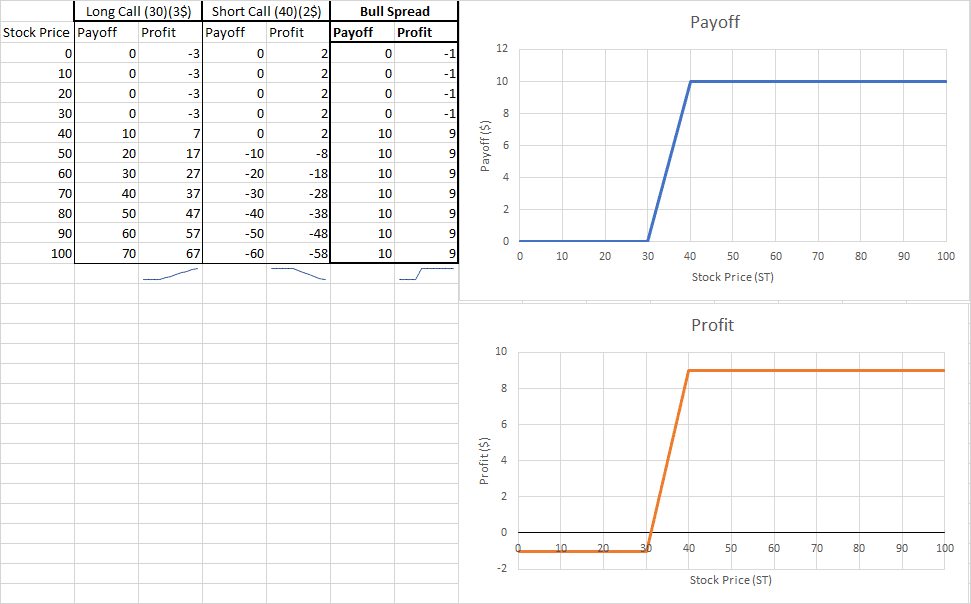A bull spread is a strategy where you simultaneously buy a long call at Strike Price 1, and sell a call for Strike Price 2. Recall that users will pocket the premium should the option not be exercised. By selling a call with a higher strike price, users can reduce their total transaction costs and create a strategy that can generate a fixed income like in a bull spread.
What are its components?
A bull spread has two components:
- Long call at strike price 1
- Short call at strike price 2
- (*A bull spread can also be created with puts)
When and why should I have a bull spread?
You should have a bull spread if you are moderately bullish on a stock and wish to enter a bullish position with protection. By having a long call, you will have a bullish position on a stock and have a protection should the stock decrease. This position entails that you will pay a premium, where the short option comes in play and reduces your costs. By doing this additional transaction, you are willing to reduce your gains for a lower transaction costs and a steady income stream once the stock performs at a price above strike price 2.
What is the payoff and profit graph?

What is the break-even point?
The break-even point of a bull spread can be defined by finding the stock price where the bull spread generates a zero-dollar profit. By adding both calls together and equating it to zero, you should solve for ST.